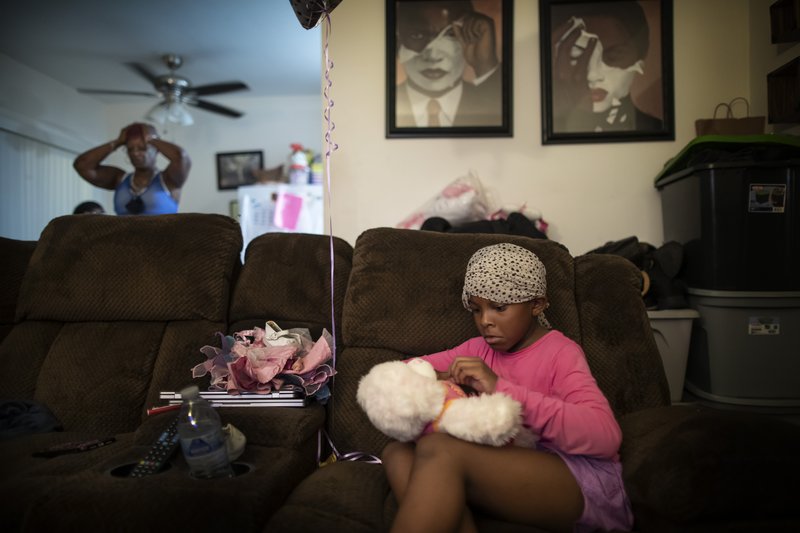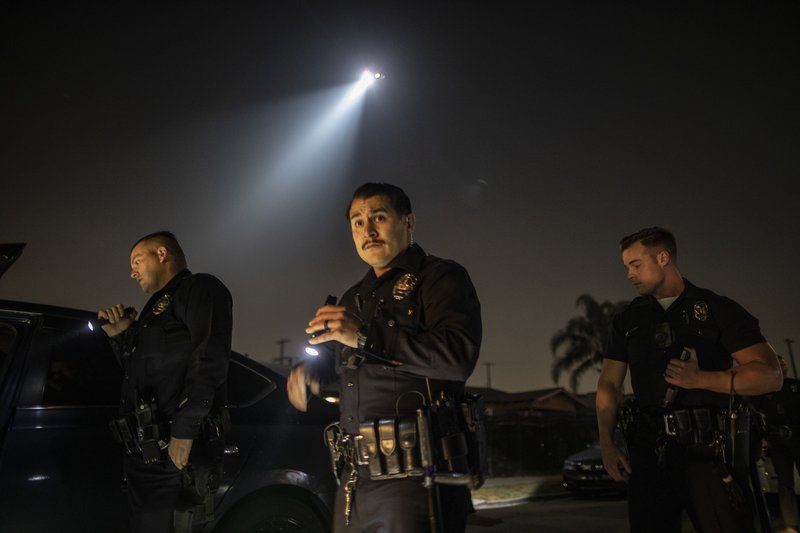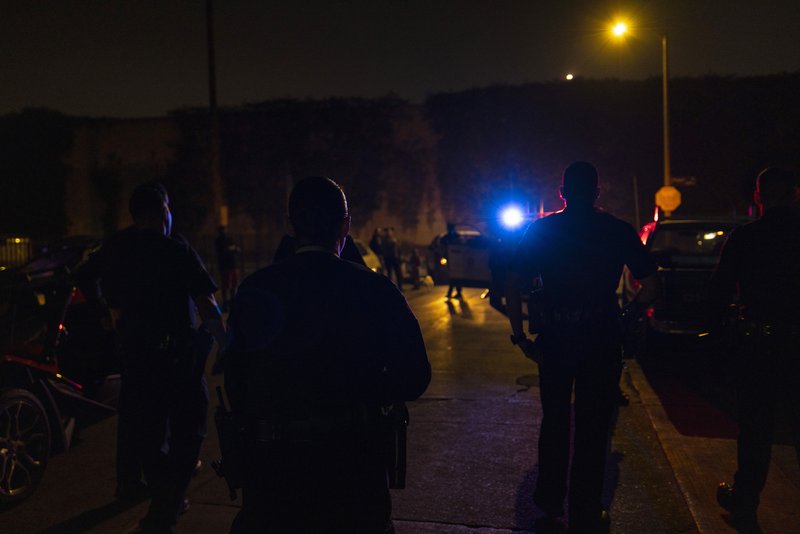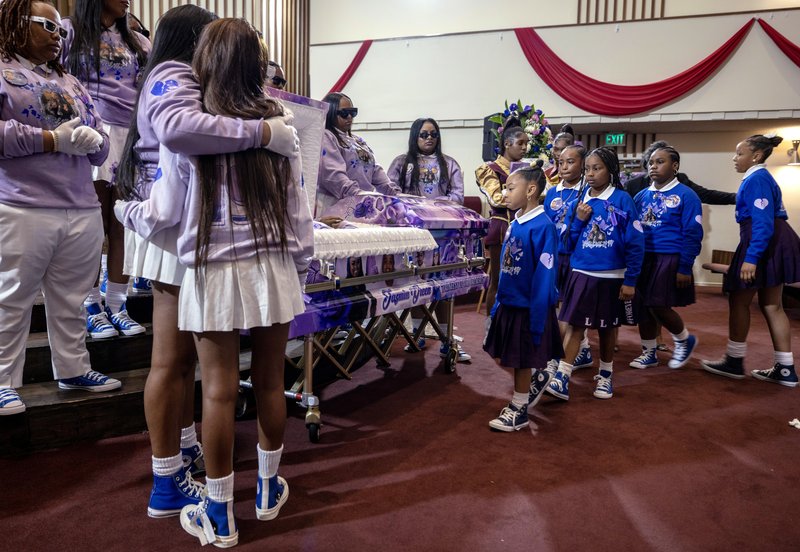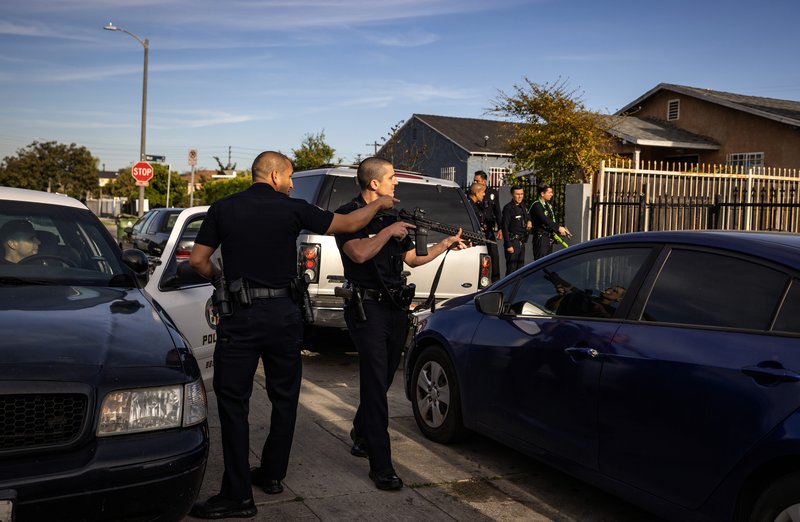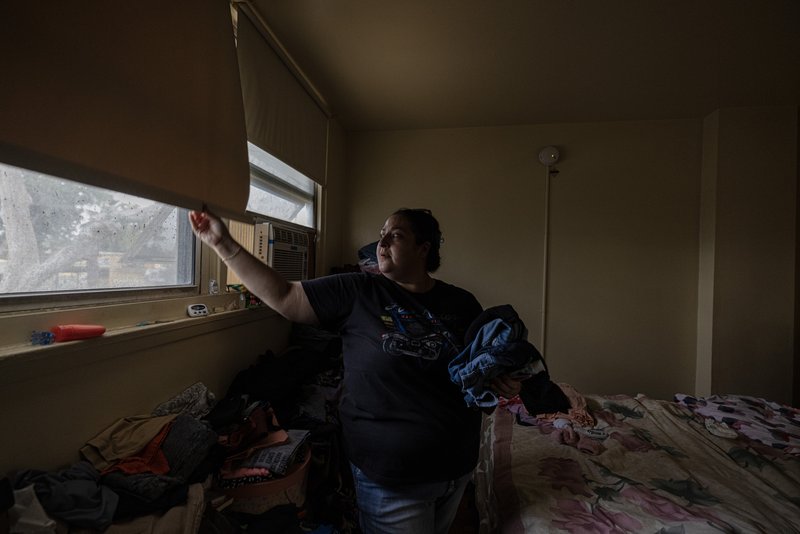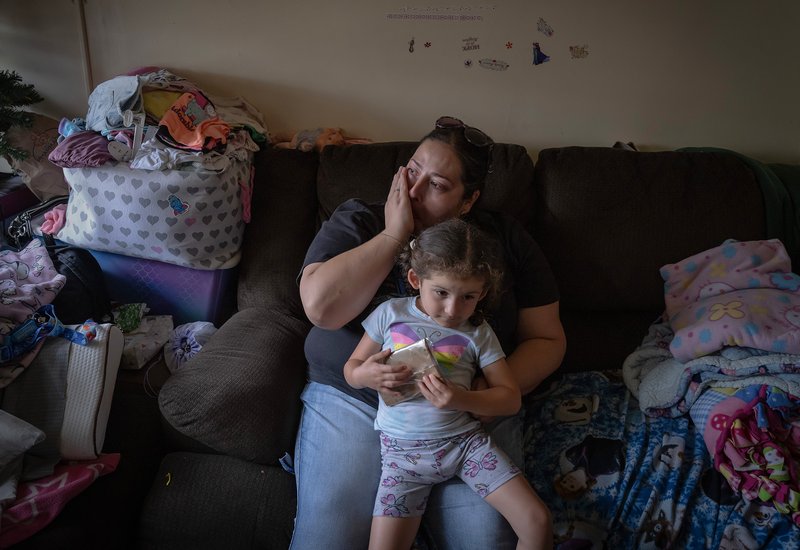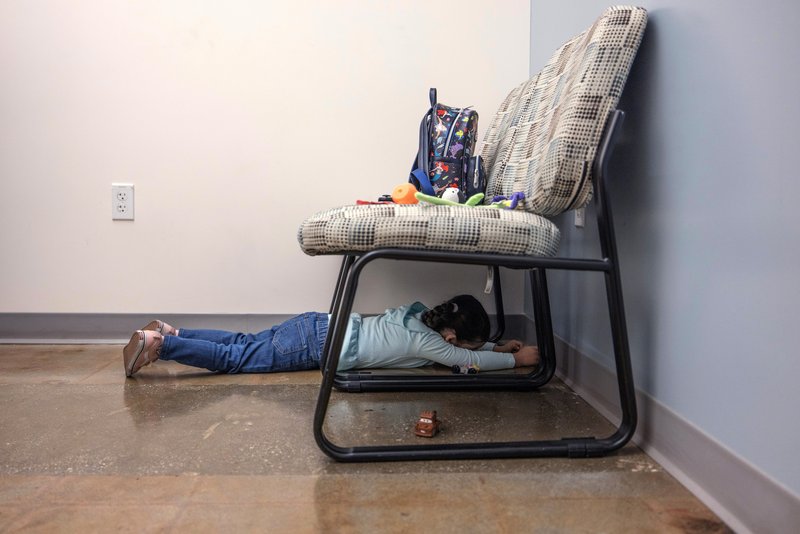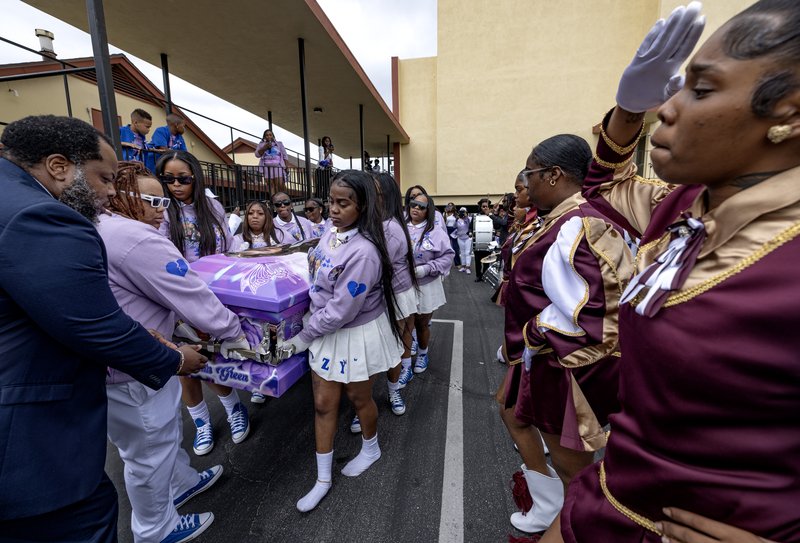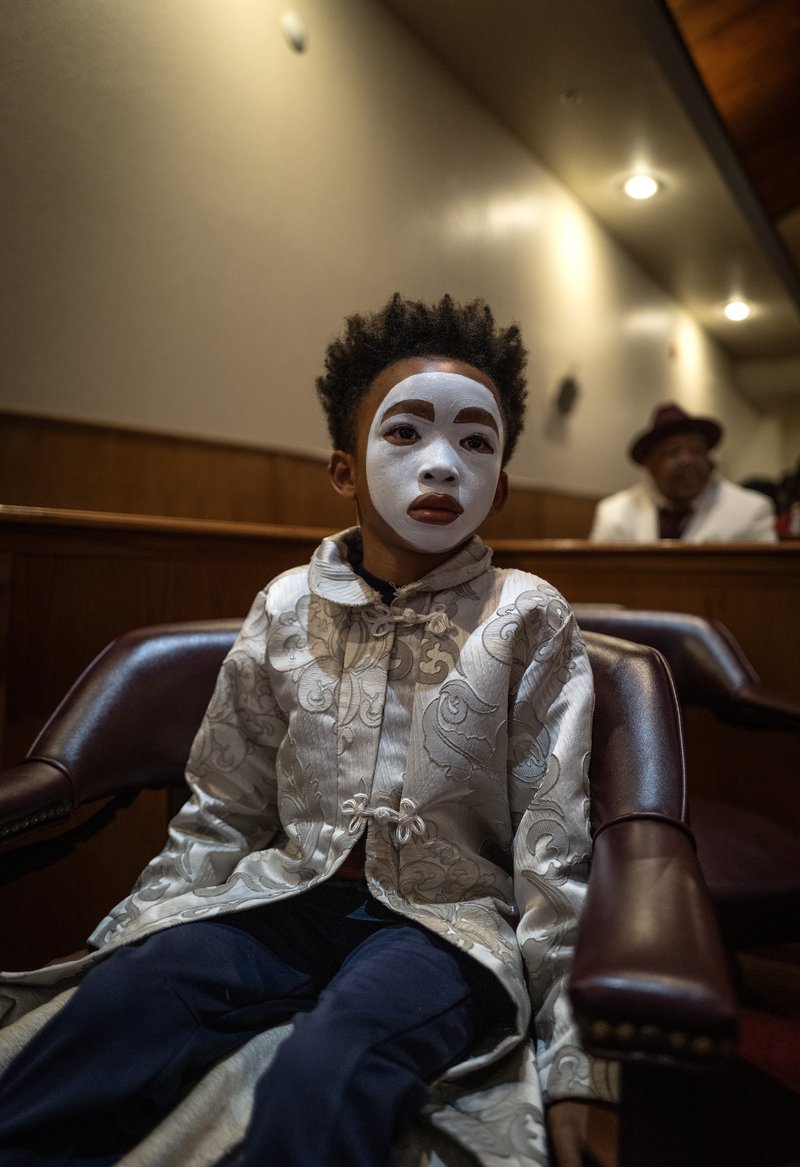Award of Excellence: "Shattered:" Firearms, The Leading Cause of Death for Children in America
This Premier category recognizes a photographer’s extended story about the everyday life of people who make up a community. The purpose is to encourage attention to the small events in life that are often overshadowed by news and celebrate images that reflect the experiences and dreams of humankind.
A “community” may be defined as a neighborhood, a town, a commune, a rural agricultural area, a city subdivision, or socioeconomic region.
In a panic, Krisette Drumgole pulls at her hair as her Granddaughter, Saniyah, 8, nervously plays with a teddy bear, while a man yells outside their apartment that he is going to shoot and kill his girlfriend in the upstairs unit if she doesn’t come out. Less than a year earlier Saniyah watched her father shoot and kill her mother. She and her two siblings are being raised by Krisette, their Grandmother. The impact of gun violence extends well beyond direct victims and long after a tragic event. One of our nation's least-discussed public health challenges is that childhood trauma, often caused by gun violence in some of our most underserved communities, is consigning kids to never fulfill their biological potential.
"Shattered:" Firearms, The Leading Cause of Death for Children in America
Firearms are now the leading cause of death for children and teens in the United States -surpassing car accidents and cancer. Twenty years ago, well after the advent of the seatbelt, the likelihood of a child dying in a car accident was still three times higher than being killed from a gunshot wound. But not anymore - we are now living in the era of the gun where 6183 children were shot in 2023 in the U.S.
In the middle of the night last April, a panicked Dolores Munoz, 35, woke up to a barrage of bullets ricocheting off her home in South Los Angeles’ Jordan Downs public housing project.Nearly four dozen shots were fired that night in what authorities called a shootout between rival gangs. One crashed through the living room window. Another tore through the wall of her 15-year-old daughter’s bedroom.
Jordon Downs, a 700-unit public housing complex in Watts, is one of five such communities for low-income families in the Southeast Los Angeles neighborhood. The now-majority-Latino area, just south of downtown, has been chronically neglected since Black families began moving to the area in the mid-20th century during the second wave of the Great Migration. This neglect and persistent racial and police violence led to volatile demonstrations in 1965 and 1992 that left thousands of people injured and dozens of local businesses destroyed.
That legacy of neglect can still be found in many neighborhoods in South Los Angeles – which has the highest incidents of gun violence in the County of nearly 10 million residents – where chronic exposure to shots fired is taking a toll on the mental wellbeing of children and teens living there.
Community leaders say without timely and effective intervention, the trauma caused by gun violence can have an irreversible impact on a child’s brain development and can cause long-term learning, health, emotional, and behavioral struggles as they grow up.
Lawanda Hawkins, who co-founded Justice for Murdered Children - a nonprofit that advocates for families of homicide victims after her only child, Reginald, was shot and killed in 1995 says, “Hurt people hurt people … we don’t need our traumatized children growing up to hurt people because society ignored their pain.”
Gun violence is not going away in this country, and not caring for children during the aftermath of these horrific life-changing events is becoming a public health crisis. If ignored, the cycle of violence is bound to repeat itself.
